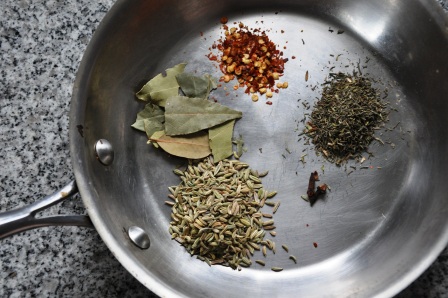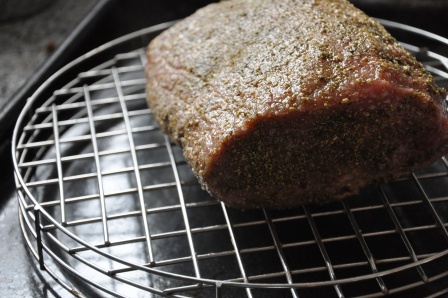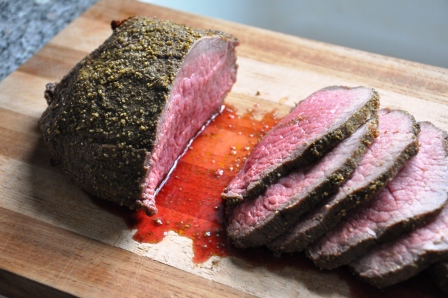It’s really easy to cook on autopilot. The groceries we buy every week, the way we cut our vegetables, what knife we use the most; things that most people don’t give too much consideration. For the students in the knife skills classes I teach, these things are suddenly brought to their attention and they begin to ask themselves (and me), why?
Do you cut your green onions starting at the white end or the green tips? Do you slice your zucchini standing up on end or lay them flat? Do you wrap your hand around your knife like a pistol or do you pinch the blade with your forefinger and thumb? Do you tend to slice your mushrooms the same size every time, no matter their final culinary destination? Do you buy romaine lettuce and Roma tomatoes year round or do you look for the newest seasonal arrivals in your market? If you don’t like radishes whole, have you had them thinly sliced, pickled, or braised?
Pondering these seemingly unimportant questions with my students is a great exercise in self evaluation and a chance to reenergize your cooking enthusiasm. When you get burnt out in the kitchen, the cure is to try doing things a little different. Try slicing carrots on a bias instead of straight, steaming instead of blanching, apple cider vinegar instead of red wine vinegar, honey instead of sugar, crushed tomatoes instead of pureed, Chinese gai lan instead of broccoli…little tweaks can make your everyday cooking exciting again.
Take roast beef. I usually buy a couple eye of round roasts when they are on sale and freeze them individually. This is a lean cut of meat is high in zinc, B vitamins, and phosphorous but it lacks marbling, so it can be dry and tough when overcooked. However, when cooked to a rosy medium rare, this inexpensive roast is tender and flavorful. When I’m in the mood for a satisfyingly meaty meal, I’ll to coat the meat with salt and pepper and roast it at a high temperature for juicy meat with a crisp, salty crust.
Most recently, I decided to switch things up and coat the meat in a mix of spices usually found in Italian sausage. I toasted fennel seeds, bay leaves, cloves, red pepper flakes, and dried thyme before grinding them together and rubbing it onto the roast. I used the same cooking method that I always do, but was rewarded with especially spicy, herbaceous, crusty beef that was even more enticing than usual. No more mealtime monotony, this recipe begs for variations. Who knows what I’ll do next time. Got any ideas of your own?
Fennel and Bay Leaf Roast Beef
This relatively inexpensive and lean cut of meat makes an impressive and tasty roast. It is most tender and juicy when cooked only to medium rare and thinly sliced, but you can cook the roast longer if you like more well done meat. Leftovers are great in salads, sandwiches, tacos, pasta, omelets, or soup.
Makes 6-8 servings
Ingredients:
2 teaspoons fennel seeds
3 bay leaves, torn into pieces
2 cloves
1/8 teaspoon red pepper flakes (or more if desired)
1 teaspoon thyme leaves
One 3-½ pound beef eye of round roast
1 tablespoon olive oil
Kosher salt
Toast the spices. In a small skillet, toast the fennel, bay leaves, cloves, pepper flakes, and thyme over medium high heat for 2-3 minutes, until fragrant. Pour the spices into a spice grinder (or clean coffee grinder used only for spices) and pulse until all the spices are finely ground.
Prepare the roast. Trim the roast of any silver skin or excess fat, and then pat dry with paper towels and coat with olive oil. Sprinkle salt all over the roast (about two teaspoons), then rub on all of the spice mixture. Put the roast onto a roasting rack over a large roasting pan and allow it to sit at room temperature for 30 minutes. Meanwhile, preheat the oven to 500° F.
Cook the roast. Put the roast in the oven, and then lower the heat to 475°. Roast the meat for 25-35 minutes, until the internal temperature reaches 120° F for medium rare. Take the roast out of the oven, cover with foil, and let it rest for 20 minutes. Slice thinly and serve with the juices from the pan.




